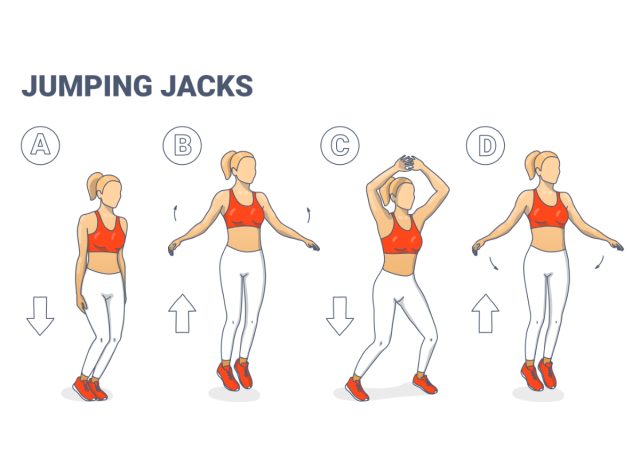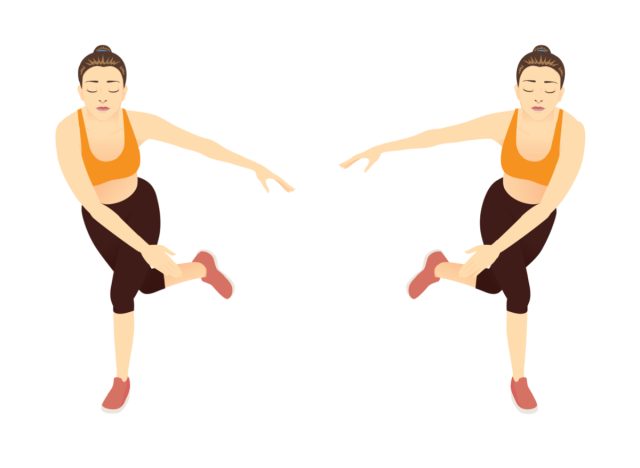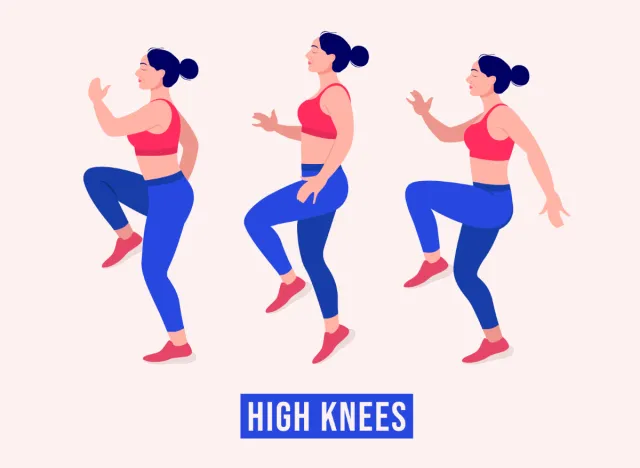Muscular endurance is a vital component of staying fit as you age. However, traditional strength programs frequently overlook exercises, sets, and repetition schemes that allow for muscular endurance. Particularly as you pass the age of 50, muscular endurance becomes important to ensure your quality of life and ability to perform day-to-day activities without getting physically exhausted. Your core in particular is very important to train to ensure your back and hips stay fit. Furthermore, lower-body endurance is vital to keeping yourself healthy and stable into your golden years. The following are our top seven standing exercises to boost muscular endurance after 50 and strengthen your core and lower body.
The best part about these standing exercises is you can do them right at home. Complete 20 repetitions of each movement, rest for 10 seconds, then immediately begin the next exercise. Aim to complete at least two full cycles twice per week. You can perform more sets and repetitions as your endurance improves. Keep reading to learn all about these standing exercises to boost muscular endurance after 50. And when you’re done, don’t miss The #1 Weekly Workout To Build Your Muscular Endurance After 40.
This exercise is a beneficial standing variation of the traditional bicycle crunch, working the entire abdominal region. It’s especially suitable for individuals with back issues as it places less strain on the spine than floor-based exercises. Furthermore, it promotes balance, coordination, and functional movement, which are particularly essential after 50. Your rectus abdominis, obliques, and lower back muscles all get a workout with this exercise.
To perform standing bicycle crunches, stand tall with your feet hip-width apart. Place your hands behind your head with your elbows out to the sides. Lift your right knee toward your left elbow while twisting your upper body to the right. Pause for a moment at the top, squeezing your abs before returning to the starting position. Repeat the same movement on the opposite side, lifting your left knee to your right elbow. Continue alternating sides for each repetition. Repeat for the target repetitions.
This exercise is excellent for strengthening the oblique muscles, which are essential for maintaining balance, stability, and rotational strength. The obliques and the abdominal muscles are the primary groups worked.
To perform a standing oblique crunch, stand straight with your feet hip-width apart and your hands on your hips. Lift your right knee to the side, and bend your upper body to the right, trying to touch your knee with your right elbow. Return to the starting position. Repeat this movement on the other side. Keep alternating sides for each repetition. Repeat for the target repetitions.
The wood chop is a full-body exercise that works the core while simultaneously improving your strength and flexibility. The twisting motion in this movement is also beneficial for your oblique muscles, and the weight from the medicine ball adds a degree of resistance training. This exercise targets the rectus abdominis, obliques, lower back, and hip muscles.
To perform a wood chop with a medicine ball, stand with your feet shoulder-width apart, holding a medicine ball with both hands. Lift the ball over your right shoulder. In a controlled manner, draw a diagonal line with the ball as you squat and twist to bring the ball down toward your left ankle. Reverse the movement to return to the starting position. Repeat for the target repetitions. Swap sides, and repeat.
READ RELATED: 10 Terrible Exercise Habits That Are Causing Your Pain
This is a great exercise for enhancing core strength and stability. It helps to improve posture and reduce the risk of back injury, which is particularly significant as you age. Dumbbell side bends primarily engage the obliques, rectus abdominis, and lower back muscles.
To set up, stand straight, feet hip-width apart, with a dumbbell in each hand. Keep your back straight and your core engaged as you bend sideways at the waist, moving toward your right. Return to the initial position, and repeat on the left side. Keep alternating sides with each repetition. Repeat for the target repetitions.


The jumping jack is a full-body cardiovascular exercise that improves heart health and boosts your body’s overall endurance. Additionally, it aids in burning calories, which can help with weight management. This exercise works the major muscle groups in the body, including the abs, glutes, quads, hamstrings, and deltoids.
To perform jumping jacks, stand straight with your feet together and your arms at your sides. Jump and spread your legs beyond hip-width apart while simultaneously bringing your arms overhead. Jump again to return to the starting position, bringing your legs back together and your arms back down to your sides. Maintain a brisk rhythm throughout the exercise. Repeat for the target repetitions.


Ice skaters are an explosive and dynamic exercise that primarily targets the lower body and core, improving muscular strength and balance. This move also simulates real-life movements and helps improve agility and coordination, which is vital as you age. This exercise mainly works the glutes, quads, hamstrings, and core muscles.
To perform ice skaters, stand on your right foot with your left foot off the ground. Jump to the left, landing softly on your left foot while bringing your right foot behind your left ankle. Repeat the movement to the other side, jumping to your right and landing on your right foot. Continue alternating sides, moving as swiftly as you can while maintaining balance. Repeat for the target repetitions.


High knees are a highly effective cardiovascular exercise that engages your core and strengthens your leg muscles. It also helps improve balance and coordination. This exercise primarily works the hip flexors, quads, glutes, and abdominal muscles.
To perform high knees, stand straight with your feet hip-width apart. Lift your right knee to your chest level as high as you can. Quickly switch, and lift your left knee to your chest. Continue alternating knees, keeping up a fast pace. Repeat for the target time.









